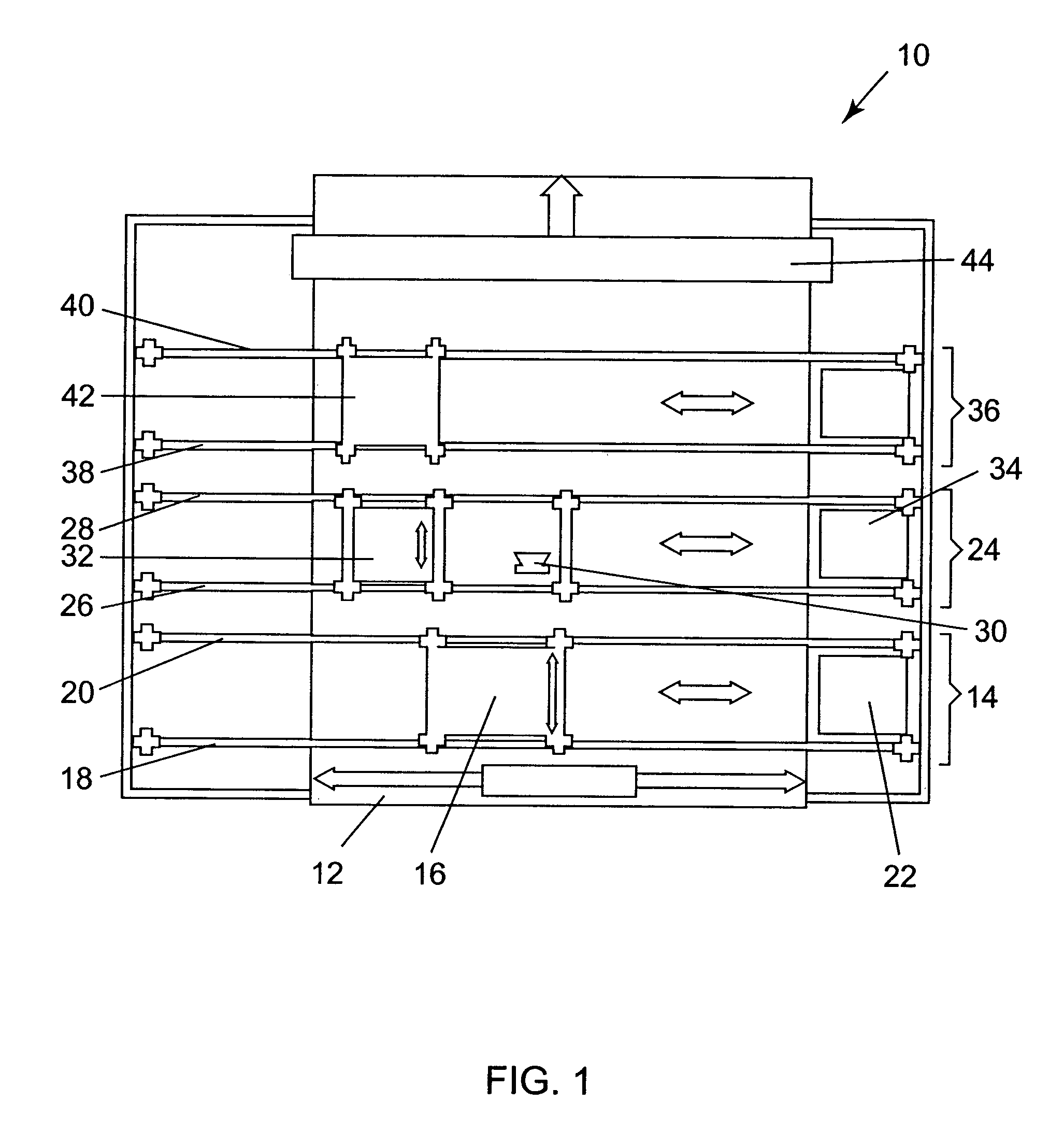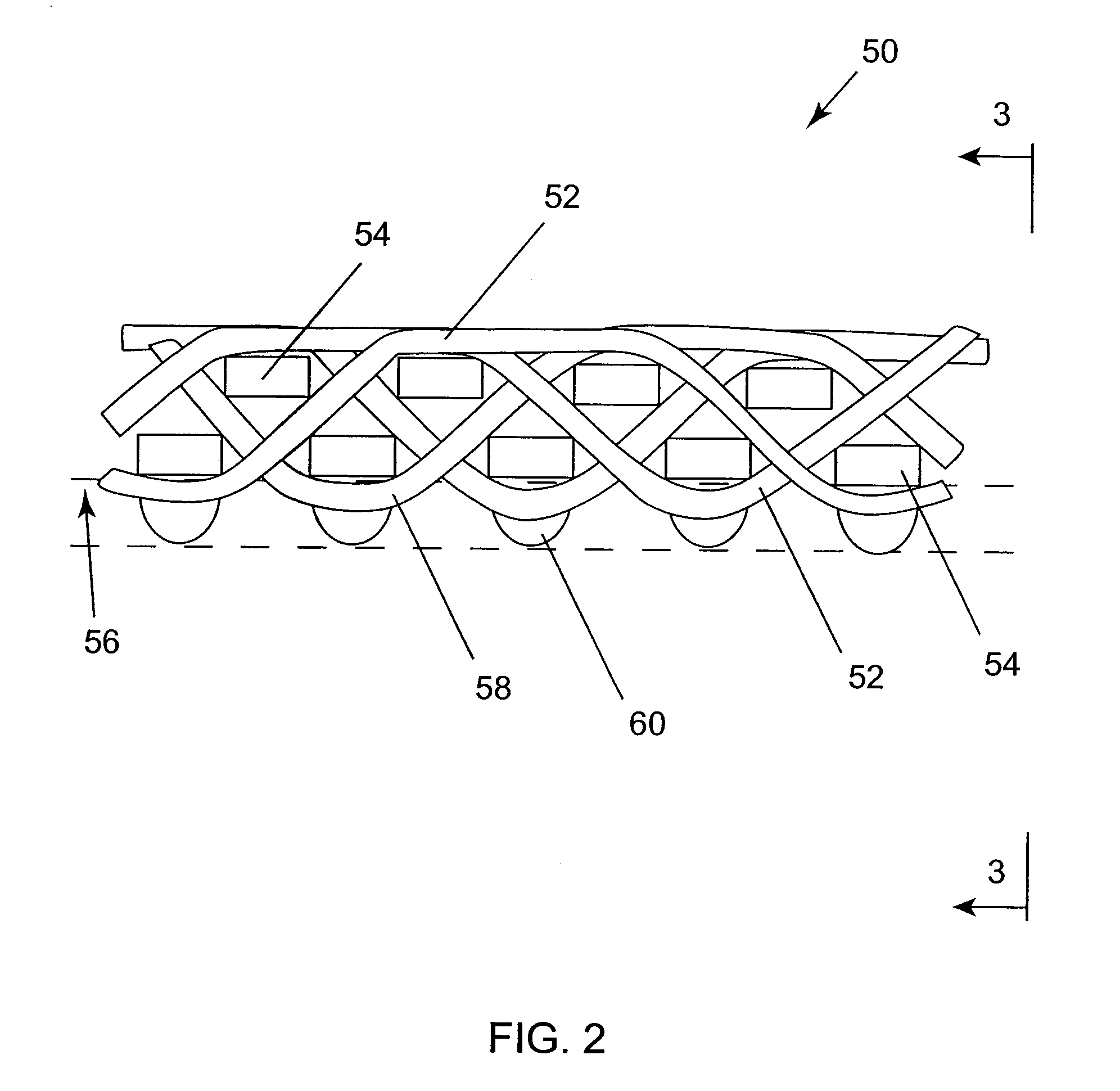Method of fabrication of a dryer fabric and a dryer fabric with backside venting for improved sheet stability
a dryer fabric and fabric technology, applied in the field of papermaking arts, can solve the problems of reducing machine efficiency, reducing paper product quality, and leaving a fibrous web on the surfa
- Summary
- Abstract
- Description
- Claims
- Application Information
AI Technical Summary
Benefits of technology
Problems solved by technology
Method used
Image
Examples
Embodiment Construction
[0031]The method for fabricating the papermaker's or industrial fabric of the present invention begins with the provision of a base substrate. Typically, the base substrate is a fabric woven from monofilament yarns. More broadly, however, the base substrate may be a woven, nonwoven or knitted fabric comprising yarns of any of the varieties used in the production of paper machine clothing or industrial fabrics used to manufacture nonwoven articles and fabrics, such as monofilament, plied monofilament, multifilament and plied multifilament yarns. These yarns may be obtained by extrusion from any of the polymeric resin materials used for this purpose by those of ordinary skill in the art. Accordingly, resins from the families of polyamide, polyester, polyurethane, polyaramid, polyolefin and other resins may be used.
[0032]Alternatively, the base substrate may be composed of mesh fabrics, such as those shown in commonly assigned U.S. Pat. No. 4,427,734 to Johnson, the teachings of which ...
PUM
| Property | Measurement | Unit |
|---|---|---|
| height | aaaaa | aaaaa |
| height | aaaaa | aaaaa |
| heights | aaaaa | aaaaa |
Abstract
Description
Claims
Application Information
 Login to View More
Login to View More - R&D
- Intellectual Property
- Life Sciences
- Materials
- Tech Scout
- Unparalleled Data Quality
- Higher Quality Content
- 60% Fewer Hallucinations
Browse by: Latest US Patents, China's latest patents, Technical Efficacy Thesaurus, Application Domain, Technology Topic, Popular Technical Reports.
© 2025 PatSnap. All rights reserved.Legal|Privacy policy|Modern Slavery Act Transparency Statement|Sitemap|About US| Contact US: help@patsnap.com



